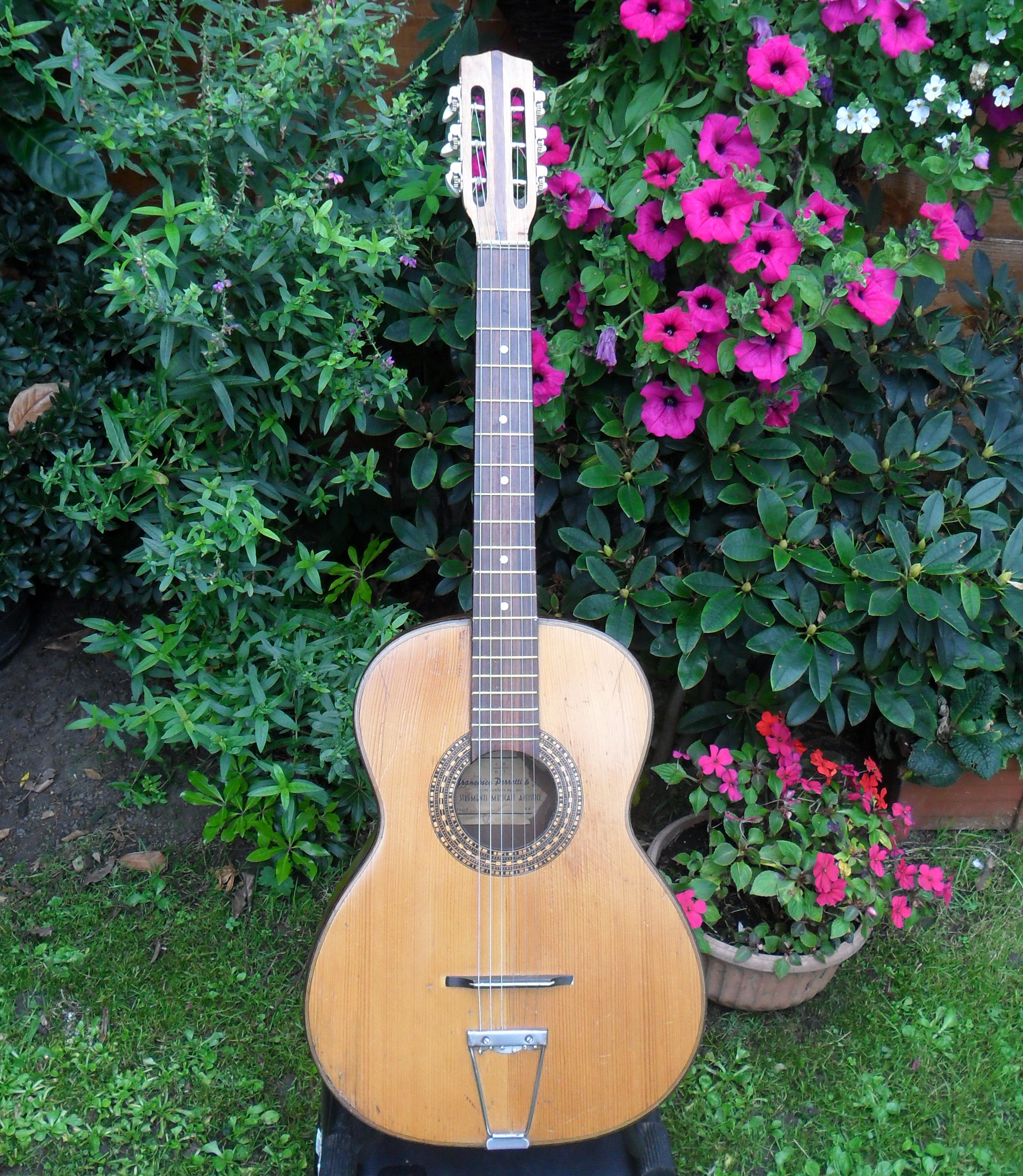
As I delve further into these early vintage parlour student guitars it may hopefully become possible to give a fair appraisal of some more of these undocumented guitars that have very often erroneously been dismissed as ‘junk guitars’.
The Musima branded guitars from the 1950’s until the 1980’S were made in East Germany (D.D.R.) and were produced in soviet styled factory co-operatives in Marknuekirchen which has a long and illustrious history of producing stringed instruments. The Musima Fiesta was retailed in local music stores and was also available via mail order here in the U.K. from 1965 until 1976 appearing in Bell’s music catalogue as one of the cheapest student guitars on the market at that time.

I managed to purchase this 1960’s Musima parlour sized guitar online for less than £10 as it was damaged and necessitated some important repairs to get it playing again. The neck was warped bending inwards and required several sessions of heat treatment to straighten it. I also had to replace the original bridge with a lower classical bridge to make the strings align to the fret board for ease of playing. The lower bout was raised slightly owing partly to a loose bracing, which I decided to leave alone for the time being.
After a fret level I installed some 9’s light gauge electric strings and was pleasantly surprised by the tone of the guitar which I tuned to ‘D’ for a blues box sound, which most of these basic ladder braced German parlours seem to produce.
This is appears to be a maple laminate top guitar, as most of these instruments in the lower price bracket were, and were made specially for the budget guitar price market, owing to the high demand for cheap student guitars in those times. I have noted that some of the later 1970’s Fiestas had spruce soundboards, however my guitar is certainly not spruce, as I can tell by the grain of the wood. The guitar neck is maple stained dark brown with a palisander rosewood fretboard, with brass frets featuring the standard German zero fret for intonation. The back of the guitar is very slightly arched with an attractive rosewood staining. From an appearance point of view it is the quality white purfing finish around the sound hole and the soundboard that gives this guitar a distinctive clean cut definition.

This little guitar performs really well acoustically and also sounds really vibrant amplified with the Schaller pickup I installed. Yet another discarded musical artefact rejuvenated with some original mojo restored!
Total guitar length 37inches (94cms) – Scale 241/4 inches (62cms) – Nut 1 ¾ inches (48 mm) – Upper Bout width 10 inches (25 ½ cms) – Lower Bout 13 ½ inches (34 cms) – Body Depth 3 ¼ inches (8 cms)
Lucas Campbell April 23rd 2024













